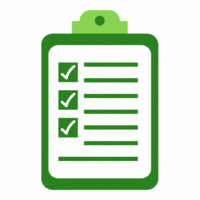Implementasi Asessmen Otentik dalam Mengembangkan Multiple Intelligences di TKIT Baitussalam Prambanan
DOI:
https://doi.org/10.35473/ijec.v2i1.414Abstract
Implememtasi asesmen otentik dalam mengembangkan multiple intelligence di TKIT Baitussalam sudah sesuai dengan mengembangkan multiple intelligence pada anak dan guru dapat mengimplementasikan asesmen otentik tersebut. Dari 9 aspek multiple intelligence masuk ke dalam instrumen asesmen otentik anak. Sembilan aspek multiple intelligence, yakni: 1) Kecerdasan linguistic, 2) Kecerdasan matematis-logis, 3) Kecerdasan visual spasial, 4) Kecerdasan musical, 5) Kecerdasan kinestetik, 6) Kecerasesmen yang di dasan interpersonal, 7) Kecerdasan intrapersonal, 8) Kecerdasan naturalis, 9) Kecerdasan eksistensial atau kecerdasan spiritual. LPPA (Laporan Pencapaian Perkembangan Anak) / Raport adalah bentuk asesmen otentik yang diberikan kepada orangtua di TKIT Baitussalam.
keywords: asesmen otentik, multiple intelligences
References
Bainbridge dalam Muhammad Yaumi dan Nurdin Ibrahim. (2013). Pembelajaran Berbasis Kecerdasan Jamak (Multiple Intelligences. jakarta: Kencana Prenada Media Group.
Bambang Sujiono & Yuliani Nuraini Sujiono. (2004). Mencerdaskan Perilaku Anak Usia Dini. jakarta: Elex-media Computindo.
Barbara T. Bowman, M. Suzanne Donovan, and M. S. B. (n.d.). Eager to Learn: Educating Our Preschoolers.
Campbell, L. (2004). Metode Praktis Pembelajaran Berbasis Multiple Intelligences. Depok: Intuisi Press.
Chatib, M. (n.d.). Gurunya Manusia. Bandung: Kaifa.
Depdikbud. (2003).
Dokumen Kurikulum TKIT Baitussalam. (n.d.).
Dominic F. Gullo. (2005). Understanding Asessment and Evalution in Early Childhood Education. New York: Colombia University.
Howard Gardner. (2013). Kecerdasan Majemuk: Teori dalam Praktek, trj.
Alexander Sindoro. Tangerang Selatan: Interaksara.
Hrushikesh Senapaty & A. K. Rajput. (2018). Hrushikesh Senapaty & A. K. Rajput. National Council of Educational Research and Training New Delhi.
Ismet Basuki dan Hariyanto. (2014). Asesmen Pembelajaran. Bandung: PT Remaja Rosdakarya.
Mulyasa. (n.d.). Manajemen PAUD.
Munif Chatib. (2009). Sekolahnya Manusia. Bandung: Kaifa.
Ngalimin Purwanto. (1988). Prinsip-Prinsip dan Teknik Evaluasi Pengajaran. Bandung: Remadja Karya.
Pamilu, A. (2007). Mendidik Anak Sejak dalam Kandungan: Panduan Lengkap Cara Mendidik Anak untuk Orang Tua. yogyakarta: Citra Media.
Salim, P. (2000). Salim’s Nith Collegiate English-Indonesia Dictionary. Jakarta: Modern English Press.
Sugiyono. (2013). MetodePenelitianPendidikan: PendekatanKuantitatif, Kualitatif, dan R& D. Bandung: Alfabeta.
Suharsimi Arikunto. (1995). Dasar-Dasar Evaluasi Pendidikan. Jakarta: Bumi Aksara, 1995), hlm. 3 Ngalimin Purwanto, Prinsip-Prinsip dan Teknik Evaluasi Pen: bumi aksara.
SuharsimiArikunto. (2010). ProsedurPenelitian, SuatuPendekatanPraktik. Jakarta: RinekaCipta.
Sukiman. (2011). Pengembangan Sistem Evaluasi. yogyakarta: Insan Madani.
T. Raka Joni. (1997). Pengukuran dan Penilaian Pendidikan. LP2LPM.
Thomas Amstrong, S. K. of S. (2005). Menemukan dan Meningkatkan Kecerdasan Anda Berdasarkan Teori Multiple Intelligences. jakarta: PT. Gramedia Pustaka Utama.
Thomas Armstrong. (2013). Kecerdasan Multiple di dalam Kelas. jakarta: RT Indeks.
Wayan Nurkancana dan P. P. N. Sunarta. (1986). Evaluasi Pendidikan. Surabaya: Usaha Nasional.
Yuliani Nurani Sujiono & Bambang Sujiono. (2004). Bermain Kreatif Berbasis Kecerdasan Jamak. Jakarta: Elex-media Computindo.
Zainal Arifin. (2009). Evaluasi Pembelajaran (Prinsip, Teknik, Prosedur),. Jakarta: Remaja Rosdakarya.
Downloads
Published
How to Cite
Issue
Section
License
Copyright (c) 2023 Indonesian Journal of Early Childhood: Jurnal Dunia Anak Usia Dini

This work is licensed under a Creative Commons Attribution-ShareAlike 4.0 International License.
Please find the rights and licenses in Indonesian Journal Of Early Childhood: Jurnal Dunia Anak Usia DIni. By submitting the article/manuscript of the article, the author(s) agree with this policy. No specific document sign-off is required.
1. License
The non-commercial use of the article will be governed by the Creative Commons Attribution license as currently displayed on Creative Commons Attribution-ShareAlike 4.0 International License.
2. Author(s)' Warranties
The author warrants that the article is original, written by stated author(s), has not been published before, contains no unlawful statements, does not infringe the rights of others, is subject to copyright that is vested exclusively in the author and free of any third party rights, and that any necessary written permissions to quote from other sources have been obtained by the author(s).
3. User Rights
Indonesian Journal Of Early Childhood: Jurnal Dunia Anak Usia Dini's spirit is to disseminate articles published are as free as possible. Under the Creative Commons license, Indonesian Journal Of Early Childhood: Jurnal Dunia Anak Usia Dini permits users to copy, distribute, display, and perform the work for non-commercial purposes only. Users will also need to attribute authors and Indonesian Journal Of Early Childhood: Jurnal Dunia Anak Usia Dini on distributing works in the journal and other media of publications.
4. Co-Authorship
If the article was jointly prepared by more than one author, any authors submitting the manuscript warrants that he/she has been authorized by all co-authors to be agreed on this copyright and license notice (agreement) on their behalf, and agrees to inform his/her co-authors of the terms of this policy. Indonesian Journal Of Early Childhood: Jurnal Dunia Anak Usia Dini will not be held liable for anything that may arise due to the author(s) internal dispute. Indonesian Journal Of Early Childhood: Jurnal Dunia Anak Usia Dini will only communicate with the corresponding author.
5. Miscellaneous
Indonesian Journal Of Early Childhood: Jurnal Dunia Anak Usia Dini will publish the article (or have it published) in the journal if the article’s editorial process is successfully completed. Indonesian Journal Of Early Childhood: Jurnal Dunia Anak Usia Dini's editors may modify the article to a style of punctuation, spelling, capitalization, referencing and usage that deems appropriate. The author acknowledges that the article may be published so that it will be publicly accessible and such access will be free of charge for the readers as mentioned in point 3.
Â
Every accepted manuscript should be accompanied by "Copyright Transfer Agreement" prior to the article publication.



